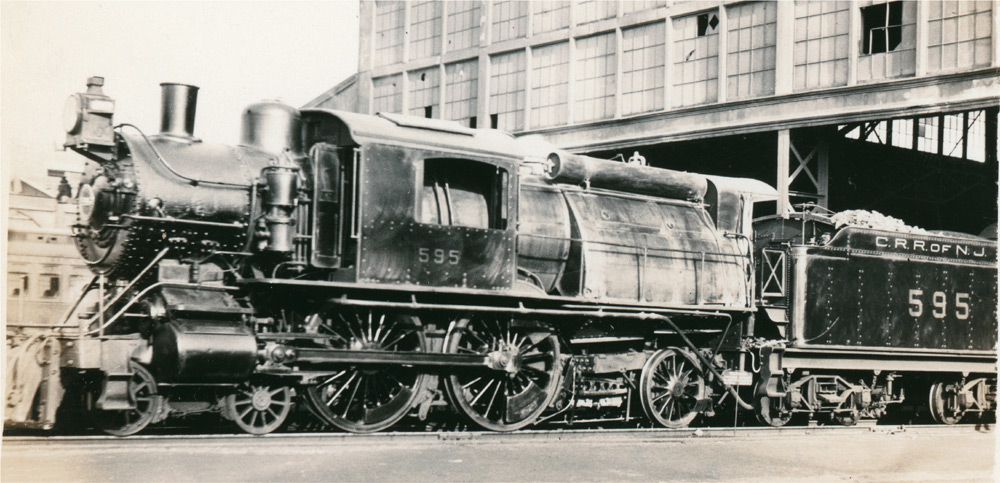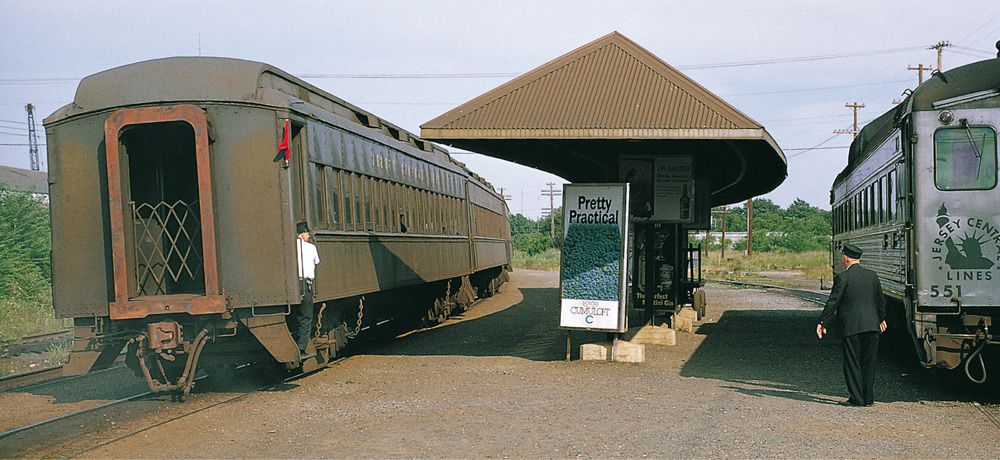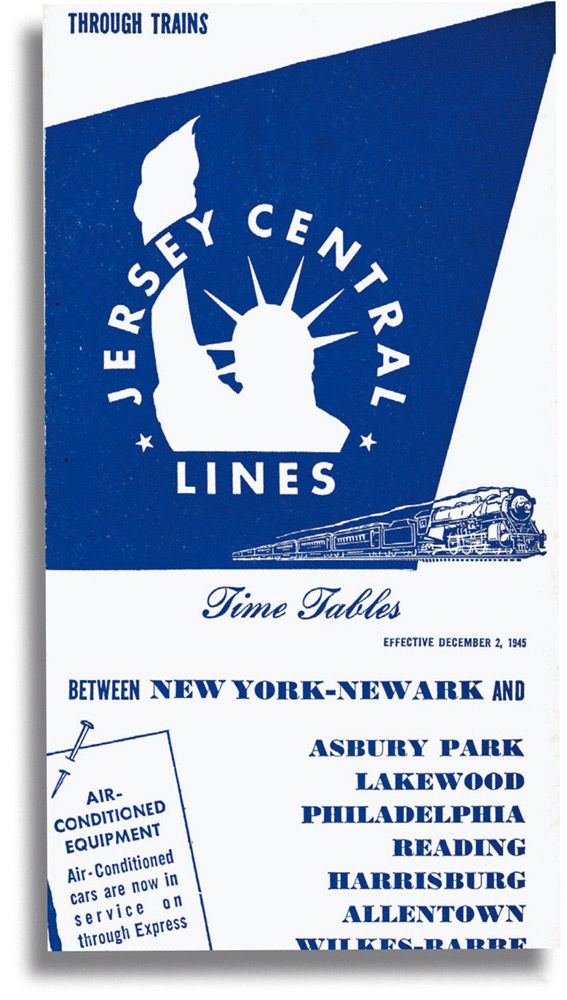19 CENTRAL RAILROAD OF NEW JERSEY
Central Railroad of New Jersey was created in 1849 from the union of Elizabethtown & Somerville (chartered in 1831) and Somerville & Easton railroads. By 1852, CNJ reached Phillipsburg at the Jersey side of the Delaware River opposite Easton, Pennsylvania. Here, it met the Lehigh Valley and the Delaware, Lackawanna & Western (and later a branch of the Pennsylvania Railroad) and served as a bridge route to forward coal east toward the New York metro area.
CNJ extended east to Jersey City and built extensive terminal facilities on filled land along the Hudson opposite Manhattan. By the early 1870s, Lehigh Valley and DL&W had extended their own lines east of the Delaware River, which encouraged CNJ to build west into anthracite country. In April 1871, it leased the Lehigh & Susquehanna from the Lehigh Coal & Navigation Company. With this acquisition CNJ reached White Haven, Pennsylvania, via Mauch Chunk, and from there pushed its main line to Wilkes-Barre via the steeply graded Ashley Planes and finally to Scranton. Expansion ran parallel to Lehigh Valley, and in many places their main lines were adjacent to one another.
In 1879, CNJ expanded southward with the purchase of the New Jersey Southern. It connected these lines to the rest of its network via the New York & Long Branch, a railroad it jointly owned and operated with the Pennsylvania Railroad. Philadelphia & Reading took control of CNJ in the 1880s, only to lose it but regain it again after 1900. During that time, B&O controlled the Reading, using both it and CNJ to forward its traffic to the New York City area.
CNJ had a significant fleet of anthracite-burning “Camelback” steam locomotives. While 4-4-2 Atlantic No. 595 was pictured here at Jersey City in the early 1930s, some Camelbacks survived in suburban service until the 1950s. A similar engine, CNJ No. 592, is preserved and displayed at the B&O Railroad Museum in Baltimore. Robert A. Buck collection
In 1966, CNJ local passenger trains meet on the New York & Long Branch at Matawan, New Jersey. CNJ and Pennsylvania Railroad jointly served the NY&LB. CNJ’s trains served its massive waterfront terminal at Jersey City until 1967, when they were re-routed into Pennsylvania Railroad’s Newark Penn Station. Richard Jay Solomon
CNJ developed an intensive suburban passenger service and expanded its main line to four tracks to accommodate business. It was one of only a few American lines to operate bi-directional suburban tank engines (similar to British suburban service tanks). In 1925, CNJ was the first railroad to purchase a commercially produced diesel-electric, a 300-horsepower boxcab, which it assigned to New York City waterfront trackage. In the 1940s, it bought a unique fleet of double-ended Baldwin “Babyface” diesels for suburban work.
After World War II, CNJ’s traffic declined rapidly with the collapse of anthracite coal and general declines in heavy industry. CNJ consolidated its Pennsylvania trackage with Lehigh Valley in 1965. Then in 1967, it closed its Jersey City passenger terminal, detouring trains via the Aldene Plan to the Pennsylvania Railroad’s Newark, New Jersey, Penn Station, and filed for bankruptcy. The line struggled on until 1976, when it was mercifully included in Conrail.
Passenger schedules, 1945. Richard Jay Solomon collection


